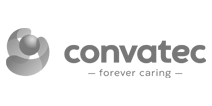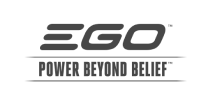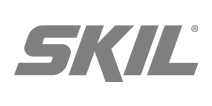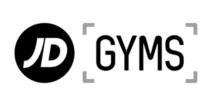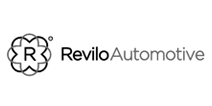
The Changing Face of Marketing Measurement
When marketing must span so many channels, knowing what has converted a customer to purchase is far from straightforward in the KBB sector. Performance marketing specialist Leon Calverley from Door4 provides valuable insights into why the most successful businesses are not just collecting lots of data but are simplifying complex reporting into actions.
 KBB products often involve significant financial investments and are not impulse buys. Customers take time to research, compare options and plan their purchases, sometimes for months or even years. And, given the high involvement and complexity, consumers may interact with various marketing channels (online research, showroom visits, consultations, and word of mouth) before deciding. This long purchase cycle makes it immensely difficult to attribute marketing efforts directly to sales or conversions.
KBB products often involve significant financial investments and are not impulse buys. Customers take time to research, compare options and plan their purchases, sometimes for months or even years. And, given the high involvement and complexity, consumers may interact with various marketing channels (online research, showroom visits, consultations, and word of mouth) before deciding. This long purchase cycle makes it immensely difficult to attribute marketing efforts directly to sales or conversions.
So, is the best thing to do is to collect data on everything, every single view, click and touchpoint that might be able to prove its worth then?
No.
Measuring marketing performance isn’t just about collecting data—it’s about collecting the right data and taking action; using it. Businesses must be intentional in what they measure and why, ensuring that every metric aligns with their broader goals.
So how do you decide?
Start with a Measurement Plan. Identify what success looks like for your business. Is it more revenue, increased brand awareness, or a higher return on ad spend? Define these goals and align your metrics accordingly.
By doing this, it later allows clarity over strategic choices, is marketing investing to scale over years to come? Is it a time to improve effectiveness? Without clarity over the plan, the wrong decisions can be made for seemingly the right reasons.
This can be especially key for smaller or growing kitchens and bathrooms businesses, where focusing on simple, yet effective, metrics is essential.
For a more comprehensive view of marketing effectiveness, businesses should then look to diversify their measurement methods, developing robust marketing measurement strategies that go beyond simple web analytics.
Digital platforms have revolutionised how businesses measure marketing impact. These platforms have been go-to solutions for tracking user behaviour, however with cookie deprecation, increased consumer awareness regarding privacy, and the rise of walled ecosystems, the ability to ‘follow people’s digital footprints’ has become an increasing challenge to digital marketers.
As the introduction of GA4 has shown, at Door4 we rarely take on a new GA4 account which is in rude health, it’s still in its infancy as a platform and for users learning the seismic change it’s brought.
All that said, whether you’re a digital marketer, brand marketer, or all-round marketer, the key is that it is one discipline and the same approach should be the starting point using a top-down view to get a consistent and strong plan.
So for the digital marketers out there that have relied on attribution models, where digital interactions are traced back to sales, as these become less sufficient you need to adapt and get back to first principles.
Attribution is but one tool in the arsenal of a marketer, it doesn’t offer the complete picture, especially when it comes to offline influences like TV ads or brand recognition.
Attribution models work like fitness trackers—they offer day-to-day insights but don’t tell the full story. For example, it’s challenging to measure the long-term impact of brand-building efforts using attribution alone. KBB businesses should continue using these models as a baseline, but they should also look beyond immediate metrics and explore other methods.
Brand studies provide an in-depth look at how marketing campaigns influence brand perception over time. They help businesses measure awareness and brand recall, which are crucial for industries like kitchen, bedroom and bathroom manufacturers and retail where reputation and trust play a significant role in customer decisions. Techniques such as focus groups, social listening, and brand surveys offer valuable quantitative and qualitative data that businesses can track consistently.
For us, however hi-fi or li-fi your solution of choice is, this is your frequent check-up at the doctor, no matter what the socio-economic climate is doing, if your brand is more famous this year than last you’re doing the right things – revenue will come from this, it may take time to recognise this.
Search data analysis, using tools like Google Trends, allows businesses to track brand search volume over time. This method is simple and accessible, making it an excellent tool for consistent trend tracking. For example, if searches for a kitchen brand increase steadily, it suggests growing brand interest, which is a positive indicator for future sales.
Social Listening Monitoring, analysing social media comments and sentiment, provides real-time feedback. For businesses, this means understanding customer preferences, gauging reactions to product launches, and spotting emerging trends. While not an exact science, social listening adds a layer of depth to traditional metrics.
Layered onto this, you should carry out Controlled Testing for incremental measurement analysis, which involves dividing audiences into exposed and non-exposed groups to determine the incremental impact of marketing activities. For example, if a kitchen brand launches a campaign in Liverpool but not Manchester, analysing the sales differences between these regions can reveal the campaign’s true impact. This method is especially valuable when entering new markets or experimenting with new channels, such as social media platforms like TikTok.
While controlled testing offers insights, econometrics takes data analysis a step further. Econometric modelling, or market mix modelling, incorporates various factors such as external events, seasonality, and competitive activity, but most importantly the spend placed to understand the overall effectiveness of marketing efforts. It moves beyond basic digital tracking to provide a comprehensive view of how different channels and campaigns contribute to sales and growth, and especially important if you have physical stores to help correlate channel spend -> footfall -> sales.
The KBB industry is competitive, and having a comprehensive, purpose-driven measurement strategy is key to staying ahead. By making practical use of the right tools, focusing on long-term brand building, and testing campaigns systematically, businesses can maximise their marketing efforts.
-
 17.03.2023|We asked Door4 Performance Strategist, Holly Neal, How does GA4 improve my audience understanding?
17.03.2023|We asked Door4 Performance Strategist, Holly Neal, How does GA4 improve my audience understanding? -
 06.10.2023|Google is retiring several attribution models, including First Click, Linear, Time Decay, and Position-Based. But don't worry; this change brings exciting opportunities for better data analysis and decision-making.
06.10.2023|Google is retiring several attribution models, including First Click, Linear, Time Decay, and Position-Based. But don't worry; this change brings exciting opportunities for better data analysis and decision-making. -
 03.09.2024|New trends are shaping the bathroom sector, and our insights reveal some intriguing shifts. Dive into the data with our latest analysis. How will these changes impact your business strategies?
03.09.2024|New trends are shaping the bathroom sector, and our insights reveal some intriguing shifts. Dive into the data with our latest analysis. How will these changes impact your business strategies?
We have a lot to talk about.
ScrapbookDoor4 opinions and insight - our articles features and ramblings.
We explore performance marketing, AI, communications and optimisation.





